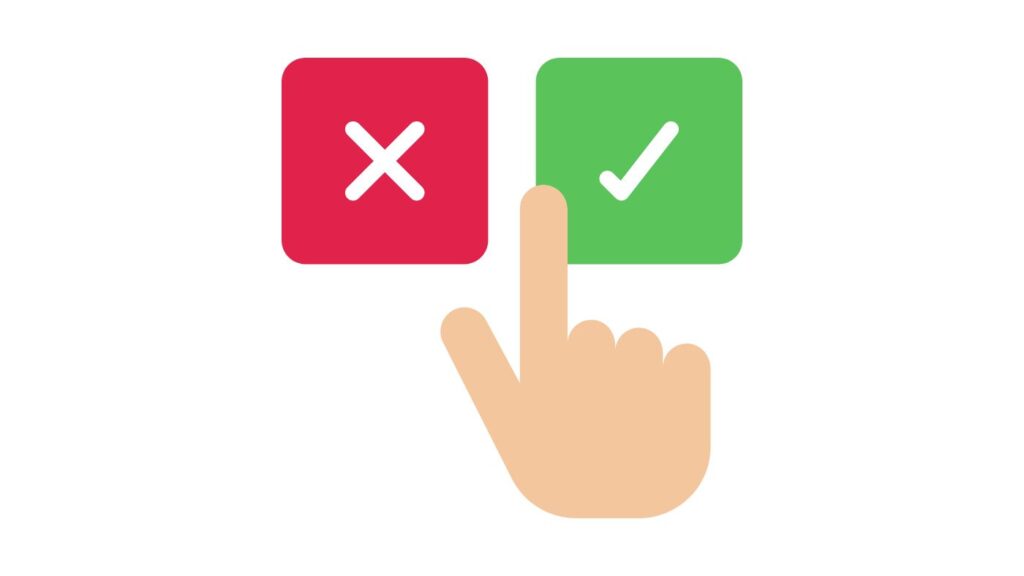Introduction: Work On A New Blog
Starting a new blog can be a thrilling endeavor, full of potential and possibilities. Whether you’re looking to share your passion, build a community, or even make a living, a well-crafted blog can help you achieve your goals. However, the journey from a blank page to a successful blog can be daunting without the right guidance. In this article, we’ll explore the essential steps to take when working on a new blog, from selecting your niche to engaging with your audience. Whether you’re a seasoned blogger or just starting out, these tips will help you build a blog that stands out and attracts a loyal readership.

Choose Your Niche Wisely
Selecting the right niche is crucial when starting a new blog. It’s important to choose a topic that you are passionate about and have expertise in. Here’s a detailed look at how to select the perfect niche for your blog:
- Passion and Expertise
- Pick a topic for your blog that you really like and know a lot about.
- Your passion will keep you motivated to consistently create content.
- Your expertise will help you create high-quality, informative posts that resonate with your audience.
- Research Your Niche
- Conduct thorough research to understand the current trends and interests within your niche.
- Identify the target audience for your new blog and their specific needs and preferences.
- Analyze the competition to see what other bloggers in your niche are doing and how you can differentiate yourself.
- Evaluate Profitability
- While passion is important, consider the profitability of your niche as well.
- Research potential monetization strategies, such as affiliate marketing, sponsored content, or selling products/services.
- Ensure there is enough demand for your niche to attract a sizable audience and potential income.
- Narrow Down Your Focus
- Sometimes, it’s beneficial to narrow down your niche to a more specific topic.
- This can help you target a more specific audience and become a go-to resource in that niche.
- For example, if you’re interested in fitness, you could narrow it down to “fitness for busy professionals” or “bodyweight fitness for travelers.”
- Stay Flexible
- Your niche may evolve over time based on your interests, audience feedback, and industry trends.
- Be open to adapting your niche to better serve your audience and meet your goals.
Picking the right topic is the first step to having a successful blog. By selecting a niche you are passionate about, researching it thoroughly, and staying flexible, you can set yourself up for success and create a blog that resonates with your audience.
Related Topic:
Which Niche is Best for Blogging in 2024
How To Choose the Best Niche for Blogging in 2024

Set Clear Goals
Setting clear goals is essential for the success of your blog. It gives you direction and motivation to keep moving forward. Here’s how you can define and set specific, measurable goals for your blog:
- Define Your Blogging Goals
- Begin by deciding what you want your blog to do. Do you want it to teach, entertain, or motivate your readers?
- Identify the purpose of your blog and what you hope to accomplish in the short and long term.
- Set Specific Goals
- Make sure your goals are specific and clearly defined. For example, instead of saying “Increase traffic,” you could say “Increase organic traffic by 30% in six months.”
- Specific goals help you focus your efforts and track your progress more effectively.
- Make Them Measurable
- Your goals should be measurable so that you can track your progress and determine if you’re on track to achieve them.
- Use metrics like website traffic, email subscribers, social media followers, or revenue to measure your success.
- Set Achievable Goals
- It’s good to have big goals, but make sure you can reach them in a realistic amount of time.
- If your goals are too hard to reach, you might feel disappointed and lose your motivation.
- Set Relevant Goals
- Ensure that your goals are relevant to your overall blogging strategy and align with your niche and target audience.
- For example, if your blog is about fitness, your goals should be related to health, fitness, and wellness.
- Set Time-Bound Goals
- Give yourself a deadline to achieve your goals. This makes you feel like you need to act quickly and keeps your attention on the task.
- Break down your goals into smaller, manageable tasks with deadlines to keep you accountable.
- Track Your Progress
- Regularly monitor your progress toward your goals. Use analytics tools to track key metrics and adjust your strategy if needed for a new blog.
- Celebrate small wins along the way to stay motivated.
Setting clear, specific, and measurable goals for your blog gives you a roadmap to success. By defining what you want to achieve and setting achievable, relevant, and time-bound goals, you can stay focused and motivated as you work towards building a successful blog.

Create a Content Strategy
A well-thought-out content strategy is crucial for the success of your new blog. It helps you plan, organize, and create content that resonates with your audience. Here’s how you can create an effective content strategy for your blog:
- Understand Your Audience
- Start by understanding your target audience. What do they like, what do they want, and what problems do they have?
- Use tools like Google Analytics, social media insights, and surveys to gather data about your audience.
- Define Your Goals
- Determine what you want to achieve with your content strategy. Is it to drive traffic, generate leads, or increase brand awareness?
- Your goals will guide the type of content you create and the topics you cover for a new blog.
- Research Your Niche
- Plan Your Content Calendar
- Create a content calendar to schedule your posts and ensure a consistent posting schedule.
- Consider the frequency of your posts (e.g., daily, weekly, monthly) based on your resources and audience engagement.
- Decide on Content Formats
- Choose the type of content you’ll create based on your audience’s preferences and your strengths.
- This could include articles, videos, podcasts, infographics, or interactive content.
- Create High-Quality, Engaging Content
- Focus on creating content that provides value to your audience and answers their questions.
- Use a mix of evergreen content (timeless content) and topical content (current trends and news) to keep your blog fresh and relevant.
- Optimize Your Content for SEO
- Use important words in your writing that fit naturally to help more people find your new blog on search engines.
- Use descriptive titles, headings, and meta descriptions to attract readers and improve click-through rates.
- Promote Your Content
- Share your content on social media, forums, and other online communities to reach a wider audience.
- Engage with your audience and encourage them to share your content with their networks for a new blog.
- Measure Your Results
- Use analytics tools to track the performance of your content and measure the impact of your strategy.
- Adjust your content strategy based on the data to improve your results over time.
By creating a solid content strategy, you can attract and engage your target audience, drive traffic to your new blog, and achieve your blogging goals. Remember to regularly review and update your strategy to stay relevant and competitive in your niche.
Related Topic:
How To Use Keywords In Content Writing: Important Updates in 2024
How To Improve Content Writing Skills in 2024
How To Start Content Writing: Important Guide in 2024
Set Up Your Blog
Setting up your new blog is the first step towards creating a successful online presence. It’s important to choose the right platform and design that aligns with your goals and audience. Here’s a detailed guide on how to set up your new blog:
- Choose a Blogging Platform
- There are several blogging platforms available, but the most popular ones are WordPress, Squarespace, and Blogger.
- WordPress: Known for its flexibility and customization options, WordPress is a great choice for beginners and experienced bloggers alike.
- Squarespace: Squarespace offers beautifully designed templates that are easy to customize. It’s a good option for bloggers who prioritize aesthetics.
- Blogger: Owned by Google, Blogger is a simple platform that’s easy to use. It’s a good choice for beginners looking to start a blog quickly.
- Select a Domain Name
- Pick a web address that shows what your new blog is about and is easy for people to remember.
- Ensure that the domain name is available and not already in use by another website.
- Choose a Hosting Provider
- If you’re using WordPress.org, you’ll need to choose a hosting provider to host your blog.
- Look for a hosting provider that offers reliable service, good customer support, and competitive pricing.
- Install Your Blogging Platform
- Once you’ve chosen a platform and hosting provider, you’ll need to install the blogging platform on your domain.
- Many companies that host websites make it easy to install popular website platforms like WordPress with just one click.
- Select a Theme
- Choose a clean, responsive theme that reflects your brand and is easy to navigate.
- Consider the layout, color scheme, and typography of the theme to ensure it complements your content.
- Customize Your Design
- Customize your theme to make it unique to your blog. This could include adding a logo, changing colors, and adjusting the layout.
- Ensure that your design is responsive, meaning it looks good and functions well on all devices, including mobile phones and tablets.
- Set Up Essential Pages
- Create essential pages for your blog, such as an About page, Contact page, and Privacy Policy.
- These pages help build trust with your audience and provide important information about your blog.
- Install Essential Plugins
- If you’re using WordPress, install essential plugins to enhance the functionality of your blog.
- This could include SEO plugins, social media plugins, and caching plugins to improve performance.
Setting up your blog is an exciting step towards sharing your ideas and expertise with the world. By choosing the right platform, design, and customization options, you can create a blog that stands out and engages your audience.

Create High-Quality Content
Creating high-quality content is essential for attracting and retaining readers. It involves writing engaging, informative posts that provide value to your audience. Here’s how you can make really good posts for your blog:
- Understand Your Audience
- Before you start writing, it’s important to understand your audience’s interests, preferences and needs for a new blog.
- Tailor your content to address their pain points and provide solutions to their problems.
- Research Your Topic
- Do a lot of research on your topic to find important information and ideas.
- Use reputable sources and data to support your points and add credibility to your content.
- Write Engaging Headlines
- Your headline is the first thing people notice, so make it interesting and catchy.
- Use strong words, numbers, and questions to make people curious and want to click.
- Create a Strong Introduction
- Your introduction should hook the reader and provide a preview of what’s to come.
- Clearly state the purpose of your post and why it’s relevant to your audience.
- Use Clear and Concise Language
- Use simple language that is easy to understand, and avoid jargon or technical terms that may confuse your readers.
- Keep your sentences and paragraphs short and to the point to maintain reader interest.
- Provide Value
- Ensure that your content provides value to your readers by offering useful information, insights, or entertainment.
- Address common questions or challenges faced by your audience and provide practical solutions.
- Use Visuals
- Add pictures, videos, charts, and other visuals to make your content more interesting and easy to understand.
- Use visuals to break up text and illustrate key points.
- Edit and Proofread
- Before publishing your post, carefully edit and proofread it to ensure it is free of errors and flows smoothly.
- Think about getting a friend or coworker to read your post and give you their thoughts.
- Optimize for SEO
- Incorporate relevant keywords naturally into your content to improve its visibility in search engines.
- Use descriptive titles, headings, and meta descriptions to make your content more discoverable.
- Promote Your Content
- Once your post is published, promote it on social media, forums, and other online platforms to reach a wider audience.
- Interact with your audience and ask them to share your content with their friends.
By following these tips, you can create high-quality content that engages your audience and keeps them coming back for more. Remember to stay consistent in your content creation and always prioritize providing value to your readers.

Optimize Your Content for SEO
Search Engine Optimization (SEO) is essential for increasing your blog’s visibility and attracting organic traffic. Here are some ways you can make your content better for search engines:
- Keyword Research
- Start by researching relevant keywords that are related to your content and have a high search volume.
- Use websites like Google Keyword Planner, SEMrush, or Ahrefs to find the right words for your topic.
- Incorporate Keywords Naturally
- After you find the words you want to use, put them in your writing in a way that sounds natural.
- Don’t use too many keywords in your writing, as this can hurt how well your content shows up in search engines.
- Use Descriptive Titles
- Your title is one of the first things that search engines and users see, so make it descriptive and relevant to your content.
- Include your target keyword in the title to improve its visibility in search results.
- Optimize Headings
- Use different heading sizes (like H1, H2, H3) to organize your writing and make it easier for people and search engines to read.
- Include your target keyword in at least one heading to improve SEO.
- Write Compelling Meta Descriptions
- Meta descriptions are the short descriptions you see under the title when you search for something.
- Write compelling meta descriptions that accurately describe your content and include your target keyword.
- Optimize Images
- Give your images names that describe them well and add text descriptions to make them easier to find in image searches.
- Include your target keyword in the alt text, but only if it’s relevant to the image.
- Create High-Quality Content
- Try to make really good content that people find useful and enjoy reading.
- Search engines like content that give good information, is interesting, and matches what people are looking for.
- Improve Page Load Speed
- A fast-loading website is essential for SEO, as slow loading times can negatively impact user experience.
- Use tools like Google PageSpeed Insights to analyze and improve your website’s loading speed.
- Mobile Optimization
- With more users accessing the internet from mobile devices, it’s important to ensure that your website is mobile-friendly.
- Use responsive design to ensure that your website looks and functions well on all devices.
- Monitor and Analyze
- Keep an eye on how well your website is doing using tools like Google Analytics and Google Search Console.
- Analyze your SEO efforts and make adjustments as needed to improve your rankings.
By optimizing your content for SEO, you can improve your blog’s visibility in search engine results and attract more organic traffic. Remember to focus on creating high-quality, valuable content that meets the needs of your audience.

Promote Your Blog
It’s important to tell people about your blog so more people read it and become your fans. Here are some effective strategies to promote your blog:
- Utilize Social Media
- Share your blog posts on popular social media platforms like Facebook, Twitter, Instagram, LinkedIn, and Pinterest.
- Use attractive pictures, interesting captions, and hashtags that fit your post to get more people interested and involved.
- Engage with Your Audience
- Answer comments, messages, and when people mention you quickly create good connections with your audience.
- Encourage discussions and interactions by asking questions and seeking feedback from your audience.
- Collaborate with Other Bloggers and Influencers
- Work with other bloggers and popular people in your topic area to help each other share your content.
- Collaborate on guest posts, social media takeovers, or joint projects to reach a wider audience.
- Utilize Email Marketing
- Make a list of email addresses from people who like your blog.
- Send regular newsletters with links to your latest blog posts and exclusive content to keep your audience engaged.
- Optimize for SEO
- Use relevant keywords in your blog posts to improve their visibility in search engine results.
- Concentrate on making really good content that brings in visitors naturally.
- Join Online Communities and Forums
- Join online groups and forums that are about the same topics as your blog to tell people about it.
- Share what you know, help others with their questions, and give useful advice to show that you’re an expert in your topic.
- Utilize Paid Advertising
- Consider using paid advertising on social media platforms or search engines to promote your blog.
- Set a budget and target your ads to reach your desired audience.
- Cross-promote on Other Platforms
- Share your blog posts on other platforms, such as Medium, Reddit, or Quora, to reach new audiences.
- Be mindful of each platform’s guidelines and etiquette when promoting your content.
- Monitor and Analyze Your Results
- Use tools to see how well your promotions are working.
- Analyze which strategies are most effective in driving traffic and engagement, and adjust your tactics accordingly.
- Stay Consistent
- Consistency is key in promoting your blog. Keep a regular posting schedule and engage with your audience consistently to maintain their interest.
By using these strategies to promote your blog, you can increase your visibility, attract more readers, and grow your audience over time. Remember to be genuine, provide value to your audience, and stay consistent in your efforts.

Build a Community
Building a community around your blog is essential for fostering engagement, loyalty, and growth. Here’s how you can build a community around your blog the right way:
- Encourage Discussions and Interactions
- Create a welcoming environment on your blog that encourages readers to share their thoughts and engage with your content.
- Respond to comments promptly and engage with your audience to keep the conversation going.
- Utilize Social Media
- Use social media platforms to engage with your audience and promote discussions around your blog topics.
- Share blog posts, ask questions, and encourage followers to share their opinions and experiences.
- Host Contests and Giveaways
- Organize contests or giveaways to encourage participation and engagement from your audience.
- Offer prizes or incentives that are relevant to your niche to attract participants.
- Create a Community Forum
- Consider creating a dedicated forum or discussion board on your blog where readers can connect and discuss relevant topics.
- Monitor the forum regularly and participate in discussions to keep the community active.
- Collaborate with Other Bloggers and Influencers
- Partner with other bloggers and influencers in your niche to co-create content or cross-promote each other’s work.
- Collaborate on projects, webinars, or events to reach a wider audience and strengthen your community.
- Organize Meetups or Events
- Host meetups, workshops, or events for your readers to connect with each other and with you.
- Use these events to build relationships with your audience and strengthen your community.
- Create Exclusive Content for Your Community
- Offer exclusive content, such as behind-the-scenes updates, bonus materials, or members-only discounts, to reward your most engaged readers.
- Encourage readers to join your community by offering these exclusive benefits.
- Be Authentic and Engaging
- Be genuine in your interactions with your audience and show a genuine interest in their opinions and feedback.
- Tell your readers about your own experiences and stories to create a stronger connection with them.
- Moderate Your Community
- Set clear guidelines for behavior and moderation in your community to ensure a positive and respectful environment.
- Monitor discussions and intervene if necessary to maintain a constructive atmosphere.
- Seek Feedback and Iterate
- Regularly seek feedback from your community to understand their needs and preferences.
- Use this feedback to improve your content and community-building efforts over time.
By following these strategies, you can build a strong and engaged community around your blog, which can lead to increased traffic, brand loyalty, and long-term success.

Track Your Progress
Tracking your blog’s progress is essential for understanding what’s working and what’s not, allowing you to make informed decisions to improve your blog in the right way to work on a new blog. Here are some ways you can keep an eye on how well you’re doing:
- Use Analytics Tools
- Utilize analytics tools like Google Analytics, SEMrush, or Ahrefs to track key metrics such as traffic, bounce rate, and conversion rate.
- These tools provide valuable insights into your audience’s demographics, behavior, and preferences.
- Set Up Goals
- Define specific goals for your blog, such as increasing traffic, improving engagement, or growing your email list.
- Use your analytics tools to track progress towards these goals and adjust your strategy accordingly.
- Monitor Traffic Sources
- Keep track of where your traffic is coming from, whether it’s from search engines, social media, or referrals.
- This information can help you focus your efforts on the channels that are driving the most traffic.
- Track Audience Engagement
- Monitor metrics like time on page, pages per session, and bounce rate to gauge how engaged your audience is with your content.
- Use this data to identify areas for improvement and create more engaging content.
- Measure Conversions
- If your goal is to convert visitors into subscribers or customers, track conversion metrics such as conversion rate and lead generation.
- Use this data to optimize your conversion funnel and improve your results.
- A/B Testing
- Experiment with different elements of your blog, such as headlines, call-to-action buttons, or content formats, using A/B testing.
- Analyze the results to see what resonates best with your audience and adjust your strategy accordingly.
- Regular Reporting
- Create regular reports to track your progress and share insights with stakeholders or team members.
- Use visualizations like charts and graphs to make the data easier to understand and act upon.
- Adjust Your Strategy
- Based on the data you gather, make informed decisions to adjust your blogging strategy.
- This could involve creating more of the content that performs well, optimizing your website for better performance, or focusing on specific audience segments.
- Stay Informed About Industry Trends
- Keep an eye on industry trends and changes in search engine algorithms that may affect your blog’s performance.
- Adjust your strategy accordingly to stay ahead of the curve and maintain or improve your blog’s performance.
- Continuously Improve
- Use the data you gather to continuously improve your blog and make it more valuable to your audience for a new blog.
- Regularly review your analytics and adjust your strategy to ensure you’re on the right track toward achieving your goals.
By consistently tracking your progress and adjusting your strategy based on the data you gather, you can improve your blog’s performance and achieve your goals over time.

Stay Consistent and Patient
Building a successful blog takes time, effort, and perseverance. Here’s how you can stay consistent and patient to achieve your blogging goals:
- Set Realistic Expectations
- Understand that building a successful blog is a long-term endeavor and results may not come overnight.
- Decide on goals that are possible to achieve and keep track of how you’re doing to stay excited.
- Develop a Posting Schedule
- Create a posting schedule that you can realistically adhere to.
- Consistency is key, so aim to publish new content on a regular basis, whether it’s daily, weekly, or monthly.
- Quality Over Quantity
- It’s good to be consistent, but it’s more important to make sure your content is really good rather than just making a lot of it.
- Focus on creating valuable, well-researched, and engaging content that resonates with your audience.
- Plan Ahead
- Plan your content in advance to ensure you always have a steady stream of posts.
- Use content calendars or scheduling tools to organize your content and stay on track with your posting schedule.
- Stay Flexible
- Be prepared to adapt your strategy based on feedback and analytics data.
- Experiment with different types of content and posting schedules to see what works best for your audience.
- Engage with Your Audience
- Build relationships with your audience by responding to comments, messages, and feedback.
- Engaging with your audience can help you understand their needs and preferences better, leading to more relevant content.
- Monitor Your Progress
- Regularly review your analytics to track your blog’s performance and identify areas for improvement.
- Use this data to adjust your strategy and content to better meet the needs of your audience.
- Celebrate Small Wins
- Recognize and celebrate the small milestones and achievements along the way.
- This can help you stay motivated and focused on your long-term goals.
- Stay Patient
- Rome wasn’t built in a day, and neither is a successful blog.
- Understand that building a successful blog takes time, and be patient with your progress.
- Keep Learning and Improving
- Stay updated with industry trends and best practices.
- Continuously improve your skills and knowledge to create better content and grow your new blog.
By staying consistent with your posting schedule, focusing on quality content, and engaging with your audience, you can build a successful blog over time. Don’t forget to be patient and keep trying, because success takes time and effort.
Conclusion
In conclusion, working on a new blog requires careful planning, dedication, and a commitment to providing valuable content to your audience. By choosing the right niche, setting clear goals, and creating a solid content strategy, you can set yourself up for success in the right way to work on a new blog. Remember to stay consistent, engage with your audience, and track your progress to continuously improve your new blog. With patience and perseverance, your blog can grow into a valuable resource for your readers and a fulfilling venture for you as a blogger.





